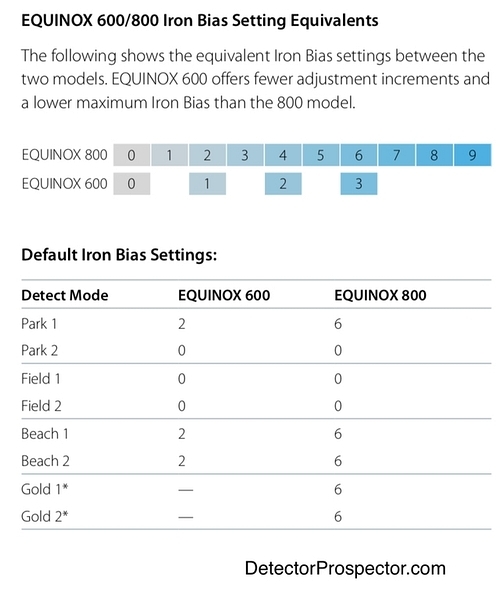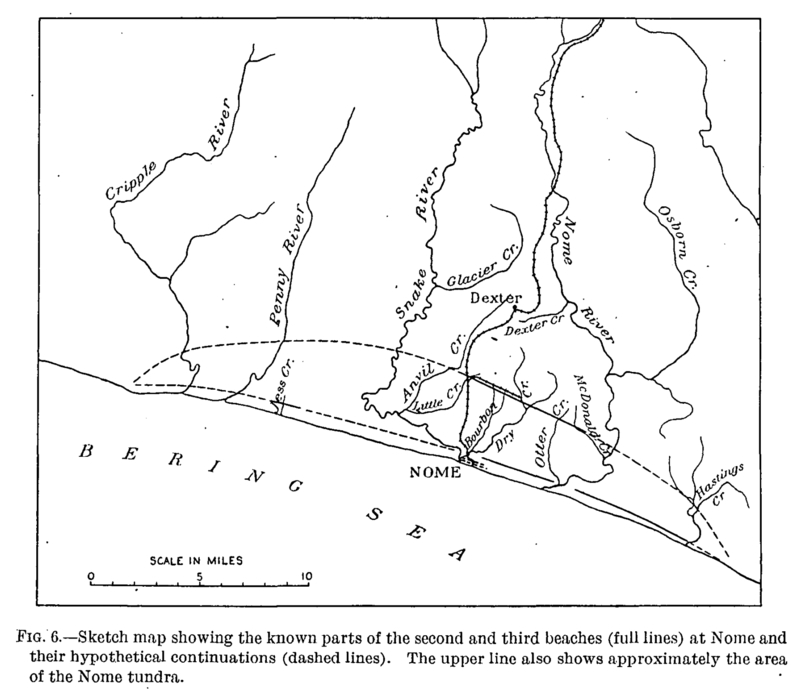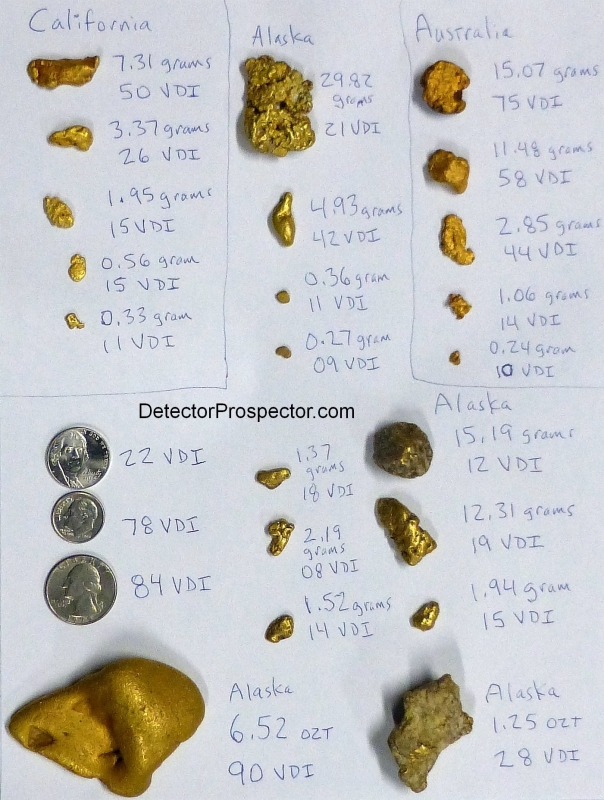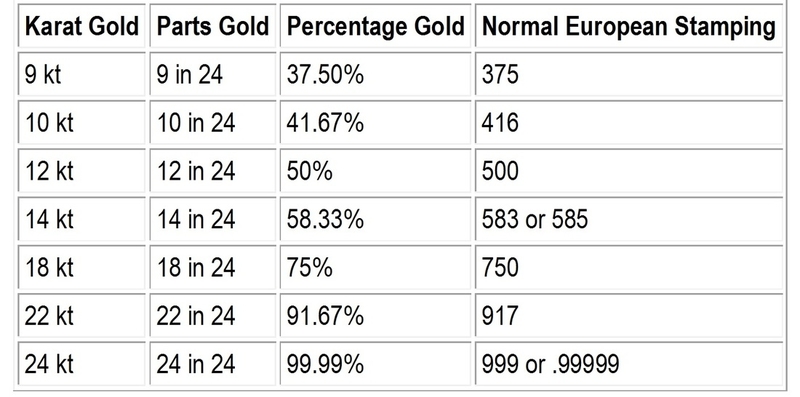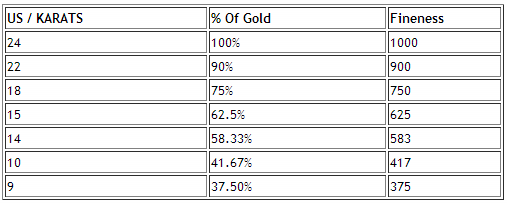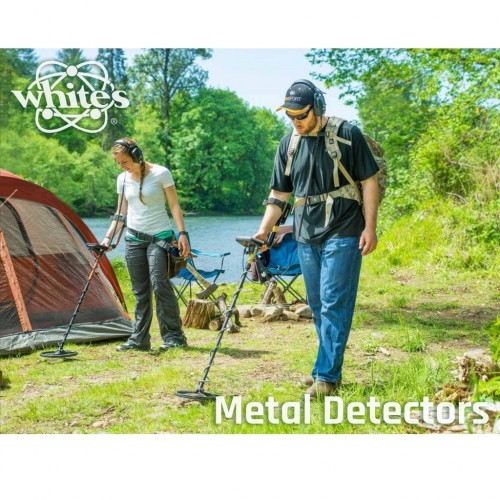-
Posts
19,735 -
Joined
-
Days Won
1,565
Content Type
Forums
Detector Prospector Home
Detector Database
Downloads
Everything posted by Steve Herschbach
-
-

Beach Sand And Coil Cover Equinox
Steve Herschbach replied to vanursepaul's topic in Minelab Equinox Forum
For those thinking of making a skid plate the commentary here is based on a previous thread about the GPZ 19” coil... http://www.detectorprospector.com/forum/topic/4025-most-effective-19-inch-coil-cover/ I am going to do this myself. However, I an not sure yet if I will glue the polycarbonate sheet to the existing scuff cover or direct to the coil bottom. I think I will get another coil and try both, as my goal is to determine which will work best nugget detecting at high gain to alleviate coil knock/falsing issues in Gold Mode at max sensitivity. -

Minelab Wireless Headphones Question
Steve Herschbach replied to FlySAR's topic in Minelab Equinox Forum
The wireless headphones that come with the 800 also come with an accessory cable to plug them direct into the detector. Have you guys tried that? Also, not saying anyone here is doing it, but in at least a couple cases now we have had people trying to use the headphones not realizing they were not paired, and that they were actually listening to the external speaker while wearing the headphones. http://www.detectorprospector.com/forum/topic/5694-when-folks-receive-their-800-units-dont-do-what-this-gent-did/ I have no issue with the audio quality of the ML80 headphones when used wirelessly. Is it as good as my SunRay Pro Gold plugged in direct? No. Not enough difference to me to make me think my finds would be any different using one over the other though. And I do like wireless! -

Wireless Bluetooth Earbuds Compatibility
Steve Herschbach replied to Bhogg's topic in Minelab Equinox Forum
Prior threads on subject... Has Anyone Tried Non Minelab Bluetooth Earphones Yet Apt-x What Are Aptx Low Latency Headphones? -
All the Bluetooth is doing on Equinox is piping the audio signal to headphones. For something like that to work I think the detector would have to be designed from the ground up to process a wireless coil signal, as was the case with Deus. Even then, a Deus coil is more of a detector in a coil with much of the work done in the coil itself. The Deus pinpointer is not the same and does not give you tones or target id information. It’s merely a pinpointer like the Garrett that connects wirelessly. To act like a Deus coil XP would literally have to somehow take everything that is in one of those $400 coils and stuff it in the pinpointer. Not only are there technical issues there but price issues also. I think you have a better chance of getting your inline probe for Equinox than a wireless probe that acts like an inline probe. And the only way that’s likely to happen is if you make one yourself. I guess like a lot of people I don’t really see the need anyway. Once I decide to dig I don’t need to know anything else about the target. I just need to find it, and regular pinpointers do a good job at that. Getting the audio piped into the headphones would be nice but I am so accustomed now to using pinpointers in vibrate mode only that it would not actually make my detecting any better. With Garrett now making a wireless Pro-Pointer AT it appears to me that Garrett is well on the way to creating the best thought out system of wireless headphones and pinpointers. Their new Z-Lynk module works well with any detector that does not have built in wireless. The new AT Max integrates the same system and is compatible with the module, as are the new Z-Lynk headphones. All new Garrett detectors will no doubt use the same system. And now their pinpointers will also integrate, and all at quite reasonable prices. Minelab has done a very poor job with wireless so far. The CTX WM10 wireless audio module, GPZ WM12 module, Pro-Sonic system, and now the Equinox WM08 module are all basically incompatible with each other. Garrett is designing an Apple type ecosystem where all the products work well with each other. Minelab every time they do a new detector series it’s like they start fresh and there is no thought for backwards compatibility or even compatibility between existing products.
-
I see you found Carl over at Toms and got an answer. As a person with a finely tuned nose for what sells there is no market of consequence for inline probes anymore. It was wiped out by the original Garrett pinpointer. They were never as big a seller as people think anyway - I was a Sunray dealer so have an decent idea about that. Making a wireless version is not easy either. The Sunray was just a coil, and employed the detector electronics to do the processing. For a wireless probe to do the heavy lifting it would have to be a complete detector in a coil, just like Deus coils. And even Deus, which is made to work that way, stumbled with their pinpointer.
-

Beach Sand And Coil Cover Equinox
Steve Herschbach replied to vanursepaul's topic in Minelab Equinox Forum
Over a half inch thick Lexan coil cover - those babies will never wear out! I am going to make some solid bottom Lexan covers for my Equinox also but I think I will go a little thinner than that. -
Aside from the fact you might find gold jewelry in the nickel range, why do you hunt for nickels? I also am a detector nut myself and do understand the concept of detecting for anything just for the fun of it. When I do coin hunt however the fact is most older nickels I find are in such poor condition that it’s doubtful they are even worth face value. Yet most silver coins I find look as new as the day they were dropped. Many silver coins found will grade out decently, but that is very rare for old nickels. This means the chance of finding high value silver coins is vastly better than the chance of finding high value nickels. Or so I believe. Newer nickels are in better condition, but key date Jefferson’s are not exactly worth a fortune, and they are few and far between. Then there is the fact that going after nickels usually involves more trash per coin, at least in my experience. If I focus on silver dimes and higher there is very little trash that ends up in my pouch. Anyway, is anyone digging nickels for any real reason other than that finding an old Buffalo or V nickel is a fun find? What’s the highest value nickel anyone has found? I have some War nickels that might be worth a few bucks, but that’s it for me.
-
Your original post did not ask about Bethel just whether gold can be found in sand under tundra. The flats in the immediate Bethel area would not be a great place to look for larger gold but you might be able to pan a few specks of gold. I would not bother with a detector - a gold pan is a far better tool for evaluating unknown material.
-

Equinox 800 Finds Gold Coin!
Steve Herschbach replied to Cabin Fever's topic in Minelab Equinox Forum
Stunningly fantastic find! Not only a bucket lister for a lot of people but a fine example at that. I really like the Indian Half Eagle design. Congratulations Bryan, well earned for sure!! -
As always probably a trade off. Equinox will hit smaller gold better than an Excalibur, no doubt about that. It will also probably have you digging more bottle caps and tiny aluminum. You say you really love the Excalibur and the more you like the detector you have, the less chance a new one is going to excite you. In particular, the target responses on Equinox are quite different than Excalibur and so would be a change, and not everyone loves change. Long story short nobody can say how you might react to a new detector. A big factor for me and Equinox is unlike Excalibur you can eventually use different coils easily, where Excalibur is normally hardwired to the coil it uses. The 15” x 12” coil will be real sweet for those huge Florida beaches. It will probably need some rod customization for balance however running the large coil. The jury is out on robustness. Excalibur is waterproof to 200 feet, Equinox to 10 feet. That implies Excalibur is more waterproof but anyone using an Excalibur long term knows it has service issues. Equinox may end up having an edge there as knobs on Excalibur are replaced with sealed buttons on Equinox. Equinox has far fewer potential water and sand entry points and I suspect it will prove to do quite well as far as service with long run use in saltwater compared to Excalibur. Short story now is until underwater headphones are available for Equinox there is no rush for anyone to get one if it will be used in water more than 2-3 feet deep. The wireless works until the pod is submerged, and after that you need a wired connection.
-
”One of the EQUINOX’s best features is its strong Target Identifications (TIDs) system. I’ve never seen a detector able to give such reliable TIDs at depth like the EQUINOX can. Not only in Multi-IQ (multi-frequency), but also in all single frequencies, and the TIDs for non-ferrous targets are stable across modes and frequencies. .. So, for example; a copper coin giving a 21 TID in Field 1 Multi-IQ will still be a 21 if you switch to Park 1 10kHz, etc. However, this TID stability in the non-ferrous range doesn’t continue for the iron falsing that occurs. A Multi-IQ TID of 15 from an iron crown bottle cap becomes a 27 in 10kHz. Interestingly, this phenomenon opens an opportunity to practically discriminate tricky items that iron false on all metal detectors.” Full article at https://www.minelab.com/anz/go-minelabbing/treasure-talk/dealing-with-bottle-crown-caps
-
Great job both on the mods and the finds! I was hoping to get to Hawaii this winter but it just never happened. The lead weights get a bit crazy at times - pulled quite a few pounds of them out myself over the years. You beat me for most lead found on any one trip though!
-
Most detectors false if you bump a rock hard enough so the question here is a matter of degree. From https://www.minelab.com/treasure-talk/understanding-the-sensitivity-control-on-the-gold-monster-1000 on 5/12/2017: ”To manually set Sensitivity, we suggest backing all the way off to Manual 1, then gradually increase the Sensitivity whilst swinging the coil over ground, clear of metal targets, until you hear noise being detected. Then back off the Sensitivity slightly to select the highest possible level before too much noise makes the detector unstable and unusable.” The Gold Monster was designed to be silent search. In all cases where noise is encountered for any reason, including coil falsing, the solution is to reduce sensitivity until the noise goes away or is manageable. The problem is not a problem for anyone using the detector the way it was intended as outlined in the article above direct from Minelab. Assuming there is no hardware issue, the problem only occurs if the instructions above are ignored. The bottom line in my opinion is the 45 kHz Gold Monster running DD coils is not a 71 kHz Gold Bug 2 running concentric coils and trying to get it to be a Gold Bug 2 instead of using it per instructions as intended is the root cause of this “problem”. The issue is further complicated by some units having unaddressed hardware issues.
-
Credit for this info goes to johndoe here. This is the app I use.. https://itunes.apple.com/us/app/coinflation-gold-silver/id535653219?mt=8 Here is there website.... http://www.coinflation.com The phone app has melt values for junk gold and silver.
-
I updated my first post to reflect the discrepancy on the 5 cent. Thanks! Australian Coin ID Video
-
First you want to make sure it’s not counterfeit. Minelab Stop Counterfeits Page Known Counterfeit Manufacturers Whether or or not the detector would be covered under warranty depends on when the original sale was made by the authorized dealer and whether that sale was properly registered (see 4 below). If the date of manufacture is within the warranty period you should have no problem, but if the original sales date is outside of warranty or there is no way for you to prove otherwise, you might have a problem. When in doubt, get the serial number and contact Minelab. Minelab – register online at https://register.minelab.com/index.html#/form/product LIMITED PRODUCT WARRANTY CONDITIONS 1. Subject to the terms and conditions outlined in this express warranty, Minelab Electronics Pty Ltd (ACN 008 208 446) (“Minelab”) warrants that its products (“Products”) will be free from defects in materials or workmanship for the periods specified in paragraph 2 (“Minelab’s Warranty”). 2. Subject to condition 12, Minelab’s Warranty periods in respect of each of the Products are detailed at http://www.minelab.com/warranty-periods (“Warranty Periods”). A printed copy of the Warranty Periods for the Products is available upon written request. 3. The Warranty Periods in respect of each of the Products will commence on the date of purchase of the relevant Product. To avoid doubt, such date will appear on the customer sales receipt obtained by the purchaser of the Product(s) at the time of purchase (“Date of Purchase”). 4. This warranty will not be effective unless: 4.1. the Warranty Registration Form is completed (either online or in hard copy) and returned to Minelab within 45 days of the Date of Purchase; 4.2. Minelab is notified in writing of any alleged defect within 30 calendar days of the Purchaser first becoming aware of the alleged defect. All notifications to Minelab must be sent to Minelab’s Australian, United States, Irish or Dubai address; and 4.3. after notifying Minelab of the alleged defect, the Purchaser complies with all reasonable directions issued by Minelab in relation to the assessment of the fault and the return and/or repair of the relevant Products (in accordance with clause 6). 5. To the maximum extent permitted by law this warranty: 5.1. is extended to the purchaser identified in the Warranty Registration Form (“Purchaser”) and is transferable to a legitimate subsequent owner residing within the country of the original purchase; 5.2. does not extend to any indirect or consequential loss or damage, including but not limited to indirect or consequential loss suffered as a result of a failure in the operation or performance of the Products sold, repaired or serviced; 5.3. does not cover any loss of income or expenses claimed or incurred as a result of failure of the Products; 5.4. does not cover damage caused by accident, misuse, negligent act or omission, alteration, modifications or unauthorised service by the Purchaser or any other party; 5.5. commences on the Date of Purchase and expires at the end of the relevant Warranty Period; 5.6. is limited to operation of the Products under normal use and in accordance with Minelab’s printed instructions; and 5.7. is limited to repair, replacement or service (at Minelab’s sole discretion) of any part or parts which are returned to Minelab or a Minelab Authorised Service Centre, and which on Minelab’s examination conclusively appears to be defective. 6. Purchasers must return any defective Products to one of Minelab’s Office addresses (see below) or a Minelab Authorised Service Centre (as listed on Minelab’s website www.minelab.com), as determined by the location of the Purchaser. The Purchaser is responsible for all freight, insurance, taxes, duties and any costs of returning the relevant Product to Minelab or a Minelab Authorised Service Centre. If it is determined that the Purchaser’s warranty claim is valid, the repaired or replaced Product will be returned to the Purchaser at Minelab’s cost. If the claim is determined by Minelab to be invalid, the Purchaser will be responsible for meeting the costs of having the relevant Product returned to it, together with the costs of repair/replacement of the Product by Minelab (if any). 7. Minelab’s Warranty is limited as set out above. Subject to all relevant laws in each jurisdiction within which the warranty operates, and clauses 8, 9 and 10 below, no other warranty, guarantee or representation as to the Products or their performance is made or given by Minelab. 8. The benefits conferred by this warranty are in addition to all other non-excludable warranties, conditions, guarantees, rights and remedies in respect of the Products that a warranty holder may have under the Australian Consumer Law as set out in Schedule 2 of the Competition and Consumer Act 2010 (Cth) (“ACL”) and corresponding laws in each jurisdiction within which the warranty operates from time to time (“Non-Excludable Terms”). 9. To the extent permitted by law, Minelab’s liability for any Non-Excludable Term applicable under the ACL or equivalent laws is limited to (at Minelab’s option): 9.1. in the case of goods - replacement of the goods or the supply of equivalent goods, repair of the goods, payment of the cost of replacing the goods or acquiring equivalent goods, or payment of the costs of having the goods repaired; and 9.2. in the case of services - the supply of the services again or payment of the cost of having the services supplied again. 10. Minelab provides the following advice to all Purchasers who are consumers as defined by the ACL and to whom the ACL applies, as required by the ACL: 10.1. Our goods come with guarantees that cannot be excluded under the Australian Consumer Law. You are entitled to a replacement or refund for a major failure and compensation for any other reasonably foreseeable loss or damage. You are also entitled to have the goods repaired or replaced if the goods fail to be of acceptable quality and the failure does not amount to a major failure. 10.2. Goods presented for repair may be replaced by refurbished goods of the same type rather than being repaired. Refurbished parts may be used to repair the goods. Please note that the term “major failure” as used in clause 10.1 has a defined meaning under the ACL. 11. Minelab advises Purchasers that any servicing or repair of the Products undertaken by Minelab or a Minelab Authorised Service Centre, regardless of whether undertaken as a result of a valid claim being made by a Purchaser under Minelab’s Warranty, may result in the loss of data stored on the Products (user-generated data). 12. If any provision of this document is prohibited, invalid or unenforceable in any jurisdiction, that provision will, as to that jurisdiction, be ineffective to the extent of the prohibition, invalidity or unenforceability without invalidating the remaining provisions of this document or affecting the validity or enforceability of that provision in any other jurisdiction. 13. Minelab branded products that are manufactured, assembled, and distributed by authorised partners of Minelab carry specific warranty periods from the original manufacturer which are passed on in full by Minelab to end users. For the avoidance of doubt, this provision does not apply to Minelab products manufactured by Minelab’s contract manufacturers which Minelab warrants for specified periods directly to end users. Warranty Periods GPZ 7000, GPX Series detectors, SDC 2300, X-TERRA Series detectors, E-TRAC, Safari, CTX 3030, Minelab branded search coils, handles, shafts, headphones, bags and battery chargers are under warranty for a period of 3 years (36 months) from the Date of Purchase. GO-FIND Series detectors, GOLD MONSTER 1000, and PRO-FIND Series pinpointers are covered for 2 years (24 months) from the Date of Purchase. Excalibur II and PRO-SONIC are warranted for a period of 1 year (12 months) from the Date of Purchase. Minelab batteries, PRO-SWING 45, PRO-ALLOY, and some accessories are under warranty for a period of 6 months from the Date of Purchase.
-
Actually he posted about it here. So basically what you are saying John is your Gold Monster may have a bad coil or some other problem that could be solved, but rather than dig into that you want to continue to advise people on this issue, as if what you are experiencing is normal for all Gold Monster owners. What if you have a coil issue, and therefore everything you are saying about this problem is misinformation based a particular unit? Don’t you think you have a responsibility to make sure you have a properly operating detector before advising everyone that the problems you are experiencing are the norm? There have been no updates to the Gold Monster that I am aware of. Most people reporting this problem early on got coils or units replaced under warranty. That said, I am very interested in hearing if falsing is an issue for a lot of people out there or not. The Gold Monster has been selling very well, with many now in the field. If this problem was widespread I would expect we would be hearing more about it. Anyway, given the uncertainty it does make a Gold Bug 2 appear to be a safer bet. Yet many former Gold Bug 2 owners are now swinging a Gold Monster, so what to make of that? Hopefully more people will chime in on the thread so we get a better picture of the current situation in the field.
-
From Instruction Manual, page 31: 5 cent = 12 (or 10 see note below) 10 cent = 13 20 cent = 16 50 cent = 17 $1 & $2 = 21
-

Deepest VLF On Small Gold?
Steve Herschbach replied to nolan_dusty's topic in Metal Detector Advice & Comparisons
Air tests are close to worthless for determining how gold nugget detectors perform in actual field conditions. The factors that make a detector air test well are the same factors that can prevent good penetration in mineralized ground and enhance the response to hot rocks. Air tests can reveal the smallest item that is theoretically possible for a detector. It can also reveal theoretical performance in ground that is perfectly lacking in mineralization. However, the number one most important factor for how any nugget detector performs is in how well it handles the ground and hot rocks. That information is not only lacking when doing air tests but air tests actually favor detectors with poor in ground performance. I recommend that if you are serious about gold prospecting look at units made specifically for the task. For top performance on the smallest gold focus on models running at 30 kHz or higher. Examples include the Fisher Gold Bug 2 (71 kHz), Makro Gold Racer (56 kHz), Minelab Gold Monster (45 kHz), and the White’s Goldmaster/GMT. (48/50 kHz). The soon to be released Makro Gold Kruzer (61 kHz) is also a likely contender. There are many posts and information about all those models on this forum and website. For sheer numbers in the field and past history if put to a vote the Fisher Gold Bug 2 would probably win the popularity contest. Steve’s Guide To Gold Nugget Detectors -

Wm 08 Wireless Audio Module Dropping Out
Steve Herschbach replied to sdbirder's topic in Minelab Equinox Forum
The WM08 like the WM10 and WM12 before it can experience audio drop outs if there is anything blocking direct line of sight between the module and the detector pod. -
Pure metals read higher than alloys. So a pure gold item will have a higher target id number than the same size item alloyed with copper or silver, etc. Large items have higher target id numbers than smaller items made of the same metal. A $1 gold coin reads lower than a $5 gold coin which reads lower than a $20 gold coin. A silver dime reads lower than a silver dollar. Therefore small silver items like silver chains or hammered silver coins can have lower target id numbers than larger/thicker gold items. U.S. jewelers use the karat (k) where 100% pure gold is 24k. Think of the purity as how many “parts” out of 24 are gold versus other metals. 18 parts gold to other metals is 18k. 12 out of 24 parts gold is 12k. 9 out of 24 parts gold in 9k Miners and gold refiners plus many European jewelers go by “fineness” which is just the percentage of gold multiplied by 10. Absolutely pure gold in considered impossible so most bullion is marked 999.99 fine. From http://www.detectorprospector.com/forum/topic/3523-target-id-vdi-numbers-for-gold-nuggets-and-gold-jewelry/
-

